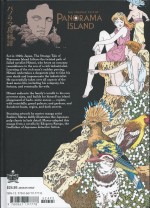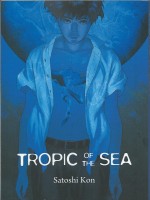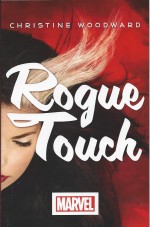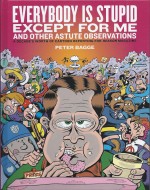
By John Jackson, illustrated by Daniela Jaglenka Terrazzina (JJBooks)
ISBN: 978-0-9569212-8-4
Win’s Christmas Gift Recommendation: Lavish, luxurious and utterly special – a book the entire family will adore … 10/10
I love books. I always have. I also had tremendously understanding parents.
When I was kid each birthday and every Christmas brought fantastic volumes that assaulted all the senses my podgy young body was prey to. The 1960s were a golden age for fabulous books for kids or adults…
The feel of shiny, sturdy card-covers and solidly reliable paper pages, the reassuring weight of a tome, the smell of printers ink and faint crack of a thick, solid spine opening for the very first time always overwhelmed me with each fresh acquisition. (I quickly got over licking my books – it made the pages soggy and smoosh together…)
Most important of course were the contents: words and pictures which could transport a reader to worlds ancient, modern or even futuristic, comfortably familiar and fantastically alien.
Like most of my compatriots I consumed everything, but I always harboured a particular affinity for stories about mythical Heroes, Gods and Monsters…
Now decades later, after a seeming eternity of books getting gradually smaller, duller, flimsier – but certainly not cheaper – the good old days seem to be returning. It’s obviously the time and season for books that look and feel like something special…
Case in point is this magnificent construction – a colossal 304 x 216mm, 248 page monochrome prose-&-illustration hardback from advocate, barrister, businessman, campaigner and writer-turned-publisher John Jackson.
Between nostalgically welcoming substantial card covers rests a captivatingly retelling of tales from the Hindu Holy Trinity the Trimurti, augmented and embellished with 50 spectacular full and double-page ink illustrations by Italian artist Daniela Jaglenka Terrazzina (A Little Piece of England, Animals Marco Polo Saw, Tales for Great Grandchildren: Folk Tales from India and Nepal and others).
Her stark, lush style is reminiscent of Aubrey Beardsley, Sidney Sime, Edmund Dulac and other past masters of elegant fantasy and will instantly transport you to places long away and far ago…
The captivating recapitulations begin in Tales of Creation: dealing with the earliest days of the universe when the grand cosmic sound Aum echoed in the void and brought forth the Lords of Creation Brahma the Creator, Vishnu the Preserver and Shiva the Destroyer.
In ‘The Beginning’, we learn how, after dreaming, Brahma brought forth Seven Wise Men and their wives. From these came the races of Gods and Demons. After this Brahma dreamed again and the First World was created, populated with animals and mankind.
When Wise Man Durvasas brought his haughty nephew Indra, King of the Gods a gift it was unappreciated and resulted in ‘The Curse’ which tipped the balance in the eternal war between Gods and Demons. The deities beseeched Brahma to intercede, and the Lord of Creation delegated the task to Vishnu who revealed all could be made well if the Gods found a way to churn ‘The Milk Ocean’…
‘The Lie’ tells of Kadru, the Mother of all Snakes and her sister Vinata, revealing the dangers of excessive pride and arrogance, whilst in ‘The Sons of King Sagara’ a king with no heirs consults the Wise Man Bhrigu with spectacular results.
Indeed Sagara and his wives Kerini and Somati then begat so many sons that, as an army, they could conquer the Earth and challenge Indra himself…
As everyone knows, the First World ended in a mighty flood with only the healer Manu warned in time to preserve the Seven Wise Men and all the seeds of life and knowledge in a great boat. To ensure the Second World after the deluge Brahma became ‘The Fish’ which guided them all to safety on Mount Himavan…
Tales of Destruction deals with the harsh existence of Shiva the Destroyer, beginning with the lonely, unlovable bachelor’s search for a wife in ‘Sati’. That brief happy union was destroyed by the callous pranks of Wise Man Narada whose meddling tongue led to the bride’s death of ‘Burning Love’ – and the fiery vengeance of Shiva…
It also resulted in more celestial war, but the overwhelming campaign of the demon warlord ‘Taraka’ produced in turn a rebirth of the Destroyer’s wife in the young goddess ‘Uma’…
The Destroyer was, however, unable to create a child even though it was prophesied that such a paradoxical progeny was the only being who could win the Demon War and kill Taraka. It took the inspired intercession of Fire God Agni to finally quicken the saviour child who would be ‘Kartikeya’ God of War…
The fallout of this impossible conception was fury on behalf of Shiva’s second wife. The betrayed goddess showed hidden strength by losing her temper and, in a special dance, revealing her terrifying submerged aspect as Kalee, Destroyer of Time before finding proper stability in ‘How Uma Became Parvati’…
The grisly origins and acts of ‘Ganesha’ the Elephant-headed god then lead us into an astounding story of passion and devotion in ‘Yama and the Love Girl’. Then the convoluted tale of how prankster sky-maiden Anjana was turned into a monkey before she and Wind God Vayu conceived the mighty ‘Hanuman’ takes us full circle when easily-slighted Ganesha takes vengeance on the cruelly teasing Moon God in ‘Chandra’s Shame’…
This staggering and enthralling compendium concludes with some exploits of Vishnu in Tales of Preservation, beginning with the story of his manifested earthly aspect Krishna – ‘The Blue Boy’…
The boy’s aunt was blessed – or cursed – with a complex divinely-orchestrated fate and ‘The Loves of Queen Pritha’ details how the poor woman bore five children by different gods and became the root cause of a tragic and appalling war between families.
The epic search that reunited ‘Rama and Sita’ also includes the last great exploit of Hanuman, after which ‘The City of Dwaraka’ reveals how Krishna grew into a mighty hero and demon killer, although even he struggled to quell the all-encompassing strife between Pritha’s warring offspring the Kauravas and Pandavas…
Retired in Dwaraka, Krishna had many children. When one of them, Samba, annoyed a Yogi with his mischief the wayward boy was repaid in brutal kind by “giving birth†to ‘The Iron Rod’ which ended his father’s life…
The fable of ‘Little Gopala’ ends our mythological voyage, relating how a small and very ordinary boy became blessed of a ghostly brother with skin the colour of the sky, and the wheel turns full circle with The End describing how works of The Lords of Creation are with us still…
Epic, engaging and astonishingly enthralling, this is the kind of book entire families read; and yours should be one of them…
© 2013 John Jackson. All rights reserved.











